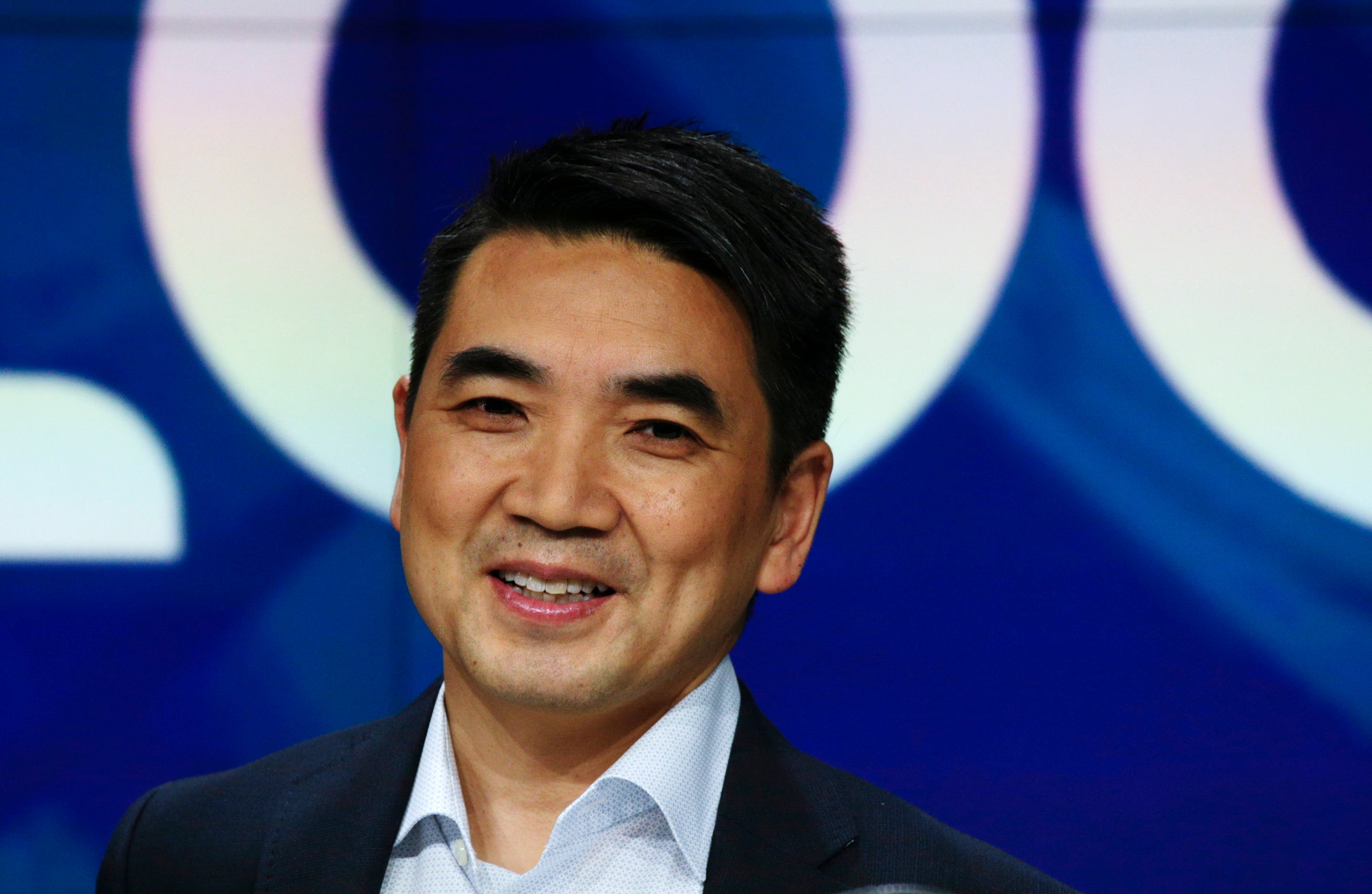Even the chief executive of Zoom says he has ‘Zoom fatigue’
Eric Yuan says he attended 19 consecutive online meetings in a day

The CEO of Zoom has admitted he is struggling with “Zoom fatigue”.
Discussing the tyranny of virtual meetings more than a year into working from home during the pandemic, Eric Yuan said he admitted 19 consecutive online meetings in a day last year.
“I do have meeting fatigue. I am very tired of it,” he told a group of top American CEOs at the Wall Street Journal CEO Council Summit on Tuesday.
In a CNN article, Mr Yuan also admitted: “It is incredibly hard to abruptly pivot from a social, in-person work environment to a world where we only see images of faces on a screen.
“My personal record is 19 Zoom meetings in a day. It’s a record that some may be able to beat, but I’ll admit it was a struggle to make it through.”
He also recommended a few tips to overcome Zoom fatigue which included suggestions like “end meetings early to give everyone a buffer to recover mentally between meetings” and “Use chat or email in lieu of a meeting.”
Other CEOs also agreed, with Jamie Dimon, CEO of JPMorgan, adding: “I am about to cancel all my Zoom meetings. I am done with it.”
A report released by Upwork, titled Future of Workforce Pulse Report released in December 2020, said “at least 36.2 million Americans will be working remotely by 2025 — an 87 per cent increase from pre-pandemic levels.”
Upwork’s chief economist, Adam Ozimek, said “Our research shows the long-lasting impact that remote work and COVID-19 are likely to have on how hiring managers think about their organisations.”
He added: “As businesses adapt and learn from this remote work experiment, many are altering their long term plans to accommodate this way of working. On work marketplaces like Upwork, we can already see this shift underway with increased demand for remote professionals.”
Meanwhile, during the WSJ CEO Council Summit on Tuesday, both Mr Yuan and Mr Dimon said that they have plans to bring their employees back into their offices at some point.
Mr Yuan indicated that the company might ask employees to return to the office for two days a week and work from home for the rest of the week.
Ellen Kullman, CEO of Carbon Inc, a 3-D printing startup, said: “I might be old school, but I’m a believer that over time it will migrate back to a more in-person environment.” She also expressed concern about how comfortable people have gotten with remote and hybrid work.
“Zoom fatigue” was a term coined during the global lockdowns last year.
Last month Stanford University released a study that revealed women reported higher levels of Zoom fatigue than men.
The study pointed out that “there are many gender effects in nonverbal communication that may be related to the other nonverbal mechanisms in video conferencing.”
It said: “Women, for example, tend to display more facial expressions than men such as smiling more with evidence suggesting that this difference is associated with awareness of being observed and feeling self-consciousness.”
The Stanford study also said: “Video conferencing may increase the cognitive load associated with these nonverbal mechanisms more for women than for men.”
It said video calls disturb the natural flow of interactions, forcing everyone to stare at each other with what it called the “hyper gaze.”
Jeremy Bailenson, founding director of Stanford University’s Virtual Human Interaction Lab told The New York Times: “From an evolutionary standpoint if somebody was very close to you and staring right at you, this meant you were going to mate or get in a fight. And constantly being on high alert creates stress.”
Join our commenting forum
Join thought-provoking conversations, follow other Independent readers and see their replies
Comments
Bookmark popover
Removed from bookmarks